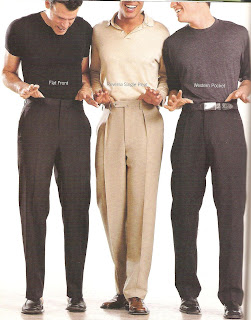Most Famous Television Trench Coat worn by Peter Falk as Detective Columbo
It seemed that Detective Columbo (1970s) always had his raincoat with him for protection; he may have also had a gun under his coat for another form of protection. (Image by Douglas Kirkland/CORBIS)
Raincoats have been around since the 13th century and have been made from various materials over the years including rubber, wool, cotton, vinyl, plastic, gabardine, nylon, Gor-Tex, microfiber and raglan.
There are many types of raincoats such as trench coats, anoraks, ponchos, cagoules, pacamacs and rain slickers. One has to consider the circumstances for wearing a raincoat whether it's to the office, hiking, sporting event, etc. For the purpose of this posting we will take a look at a raincoat for a well dressed man which is a trench coat. The main material in a raincoat is fabric which has been specially treated to repel water. The fabric of many raincoats consist of a blend of cotton, polyester, nylon and/or rayon. They made also be made from wool, wool gabardine, vinyl, leather, micro fibers and high tech fabrics.
Joseph & Feiss Trench Coat
Many stylish men consider the Burberry trench coat to be the ultimate. Thomas Burberry of Great Britain created the first all weather rain repellent coat for the militaryduring World War I. The coat was made of a yarn-dyed fine twill cotton gabardine. The gabardine was chemically treated to repel rain. Although the coats were first made for soldiers, after the war in 1918, they spread in popularity. The rest, as they say, is history.
The Classic Burberry Trench Coat
There are other clothiers that make nice trench coats such as London Fog, Calvin Klein, Canali, Landsend, Brooks Brothers, Joseph A Bank, and many others.
Canali Microfiber Hidden Buttons Trench Coat
In regards to purchasing a trenchcoat you need to consider the climate, color, single or double breasted style and length. If you live in a warm climate you may want to get a light weight coat. Otherwise, if you live in a cold environment you should consider getting a coat with a nice zip-out lining. Since the coats can provide warmth some men choose to wear their trench coats during the winter season. Trench coats range in color from white to black with tan being the most popular. It's a matter of preference whether to get single or double-breasted. The latter will have extra material the same as a similarly made suit. The length is a matter of personal choice as they range from car-coat length to full-length just above the ankles. (Car coats were originally designed for driving and they're mid-thigh length.)
Calvin Klein Car Coat Length Trench Coat
The parts of a Trench Coat consist of the collar, storm patch, buttons, lapels, belt (some are belt-less), belt loops, flap pocket, and sleeve loop. The storm patch imitates the military style which originally had a functional purpose but now it just for asthetics. The sleeve loop allows you to tighten or loosen the sleeves. The flap pocket protects the contents in the pocket.
Parts of a Trench Coat by Made by Letty.com
The Trench Coat is the most stylish and practical way to protect your clothing investment. There are many makes, styles and colors to choose from so it's a great opportunity for you to create your own personal style. By the way, don't forget your umbrella and your shoe covers such as Totes to protect those nice shoes!
Now for a song that talks about, believe or not, going outside in the rain! This is Boney James featuring Dwele "In the Rain".
Thanks for viewing this posting.
God Bless!
Douglas Prather
























































